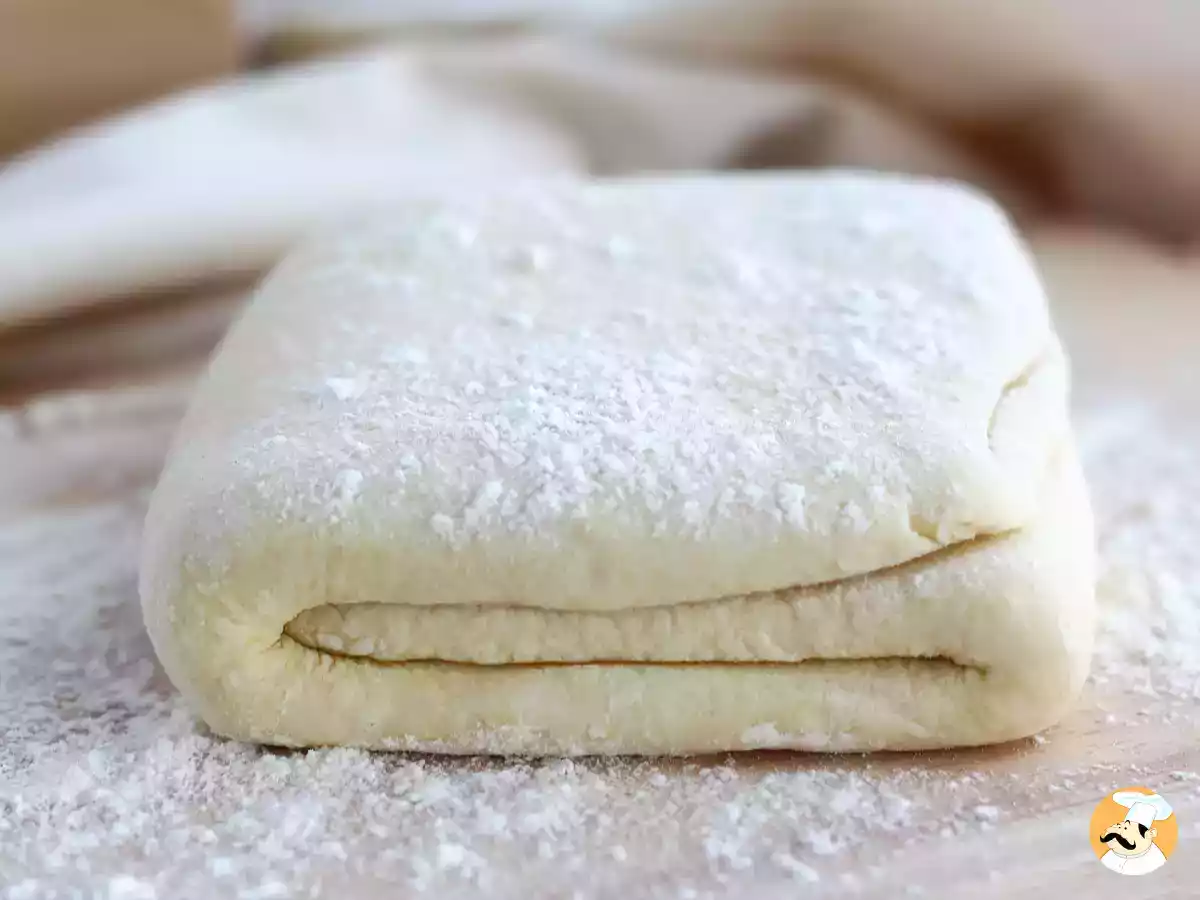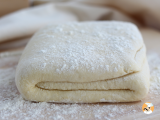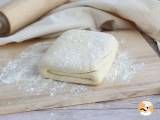My puff pastry does not rise, what am I doing wrong?

Puff pastry, that great kitchen essential, is the dream (and nightmare) of many pastry and baking lovers. Sweet or savory, in appetizers, main courses, sweets or desserts, its delicate crunchy layers are the quintessence of pleasure. But what happens when expectation turns to frustration? That ethereal tower that should magically rise doesn't rise and remains flat and uncrunchy. The culprit? It could be in your fridge, in your hands or even in an insignificant oversight.
Understanding why puff pastry rises is the first step to mastering it. This laminated dough is based on a simple but demanding principle: alternating thin layers of fat and flour. During baking, the butter, which must be cold but malleable, melts and releases steam. This steam, trapped between the sheets, expands and "pushes" the layers upward. However, for the magic to happen, everything must be perfect: temperature, handling and even the humidity of the environment can play tricks on you.
In this article we'll break down the most common mistakes that can sabotage your puff pastry and, most importantly, how to avoid them. Because whether you're working with homemade or store-bought puff pastry, small oversights can ruin the experience. So grab your rolling pin, chill the butter and get ready to get your puff pastry nice and crispy and puffy.
Common mistakes and how to fix them
1. WARM OR SOFT BUTTER
- Why it happens: If the butter is not cold enough, it integrates into the dough instead of creating defined layers. This prevents the steam from rising it properly.
- Solution: Use cold, almost frozen butter and cut it into small cubes. Handle it quickly to prevent the heat of your hands from melting it.
2. OVERWORKING THE DOUGH
- Why it happens: Over-kneading develops gluten, hardening the dough and making it lose its elasticity.
- Solution: Work the dough just enough. Puff pastry does not require prolonged kneading; it is enough to integrate the ingredients and make the necessary folds carefully.
3. APPLYING TOO MUCH PRESSURE WITH THE ROLLING PIN
- Why it happens: If you apply too much force when rolling out the dough, you can destroy the fat layers.
- Solution: Use a smooth rolling pin and apply even, gentle pressure. Cool the dough between folds to maintain consistency.
4. INCORRECT OVEN TEMPERATURE
- Why it happens: An oven that is too cold will not generate the necessary steam, and one that is too hot can burn the fat before it expands.
- Solution: Preheat the oven and bake your dough at a minimum of 350°F/180ºC. The ideal would be between 390°F/200°C-430°F/220 ºC, providing a strong initial heat to activate the flaky process.
5. NOT RESPECTING THE RESTS BETWEEN FOLDING AND FOLDING
- Why it happens: Without resting, the gluten is tense and hinders the uniform extension of the dough.
- Solution: Respect resting times of at least 30 minutes in cold between each series of folds.
6. INAPPROPRIATE USE OF FLOUR
- Why it happens: A flour with too much gluten hardens the dough, while one with too little makes lamination difficult.
- Solution: Opt for a medium-strength flour, balancing elasticity and plasticity.
7. NOT SEALING THE EDGES CORRECTLY
- Why it happens: If the edges are flattened or badly cut, the puff pastry loses its ability to rise.
- Solution: Use sharp knives and cut firmly without "dragging" the blade.
8. WORKING THE DOUGH IN A HUMID ENVIRONMENT
- Why it happens: Humidity can soften the layers and ruin the crispy texture.
- Solution: Work in a dry space and store the dough wrapped in food film if you are not using it right away.
9. EXCESSIVE GREASING OF THE PAN
- Why it happens: If there is too much grease on the surface of the baking pan, the puff pastry may "fry" instead of baking.
- Solution: Use a thin layer of butter or baking paper to avoid excess.
10. DEFROSTING THE DOUGH WRONG
- Why it happens: Rapid defrosting generates moisture and softens the layers.
- Solution: Let it thaw in the refrigerator for several hours to maintain the structure.
11. POOR QUALITY INDUSTRIAL PUFF PASTRY
- Why it happens: Some purchased puff pastry uses low-quality hydrogenated fats instead of butter, which affects its ability to rise and its flavor.
- Solution: Read labels before you buy. Look for quality puff pastries made with butter and avoid those containing partially hydrogenated vegetable fats. Opt for recognized brands or artisanal products to guarantee a better result.
What if I want my puff pastry not to rise?
We already have some tips for our puff pastry dough to rise and create its airy layers, as the nature of this dough dictates. However, it is true that there are some elaborations in which we do not want the dough to swell, for example, in the case of tartlets, whether sweet or savory. In this case, it is enough to make some perforations by pricking the dough with a fork.
If our elaborations are more delicate or we are looking for a more uniform and aesthetic result, as in the case of a mille-feuille, it would be best to place a baking tray lined with baking paper, put the puff pastry dough on top, cover it with another baking paper and place another baking tray on top. This way, when baking, the puff pastry dough will not rise and we will get a flat and uniform plate.


Comments